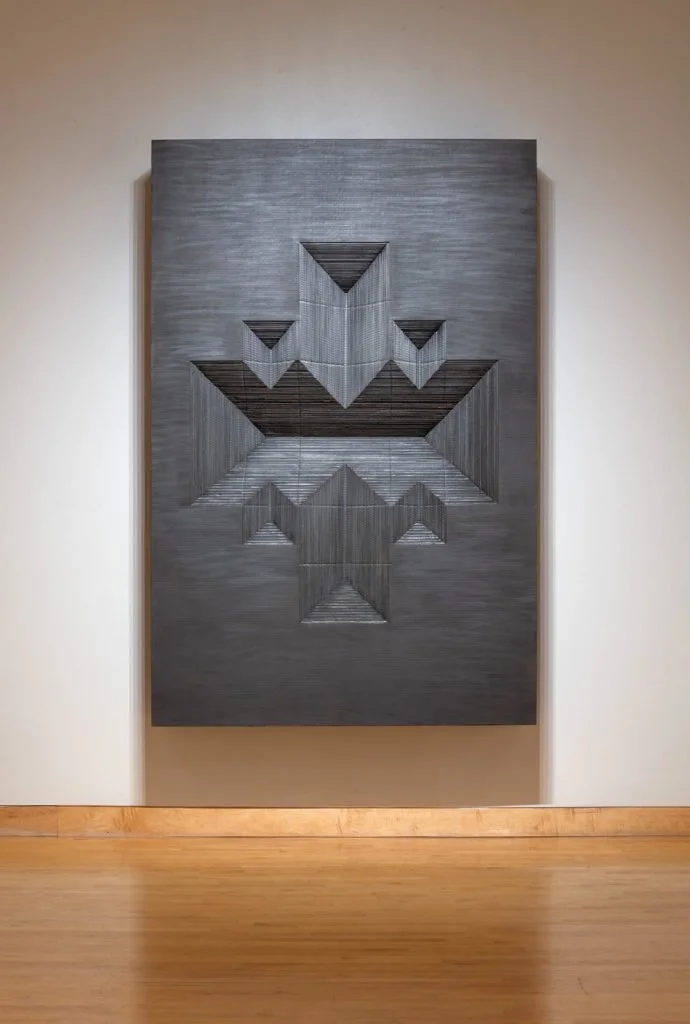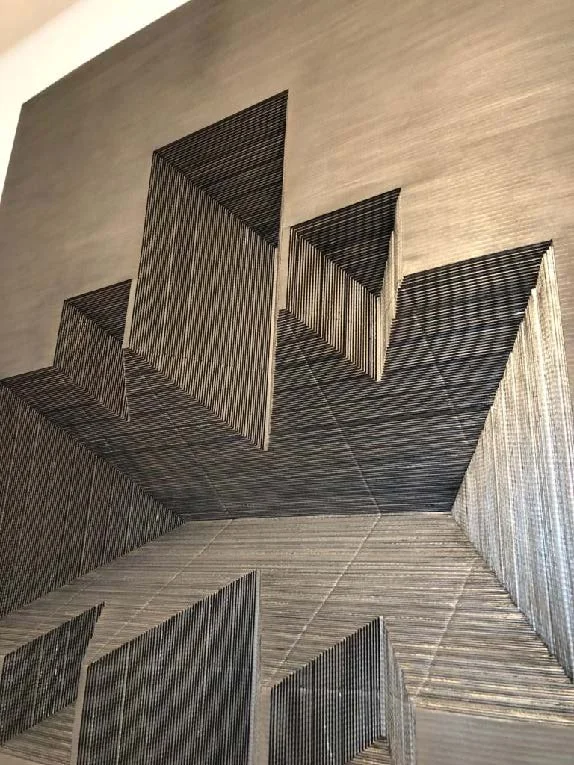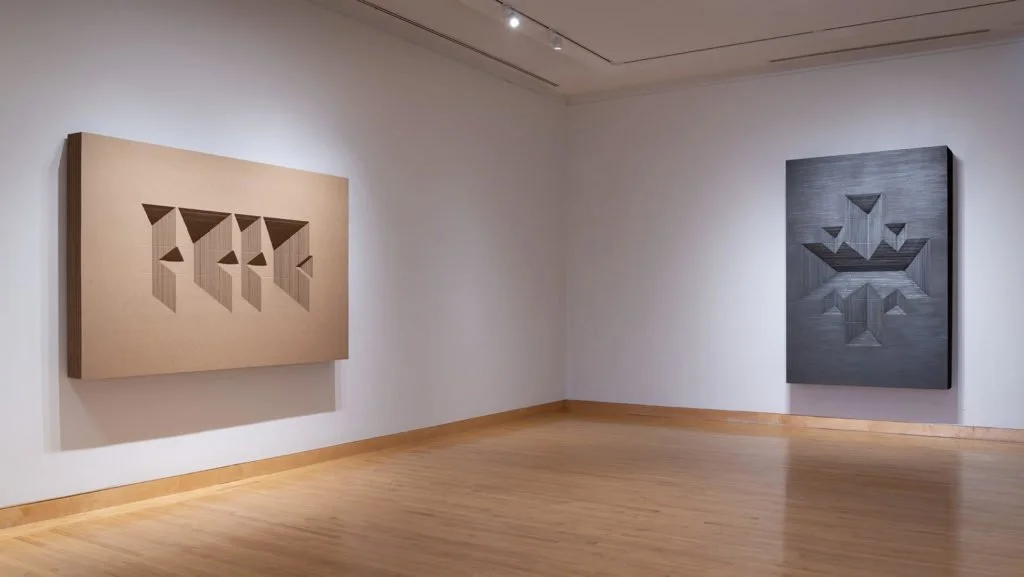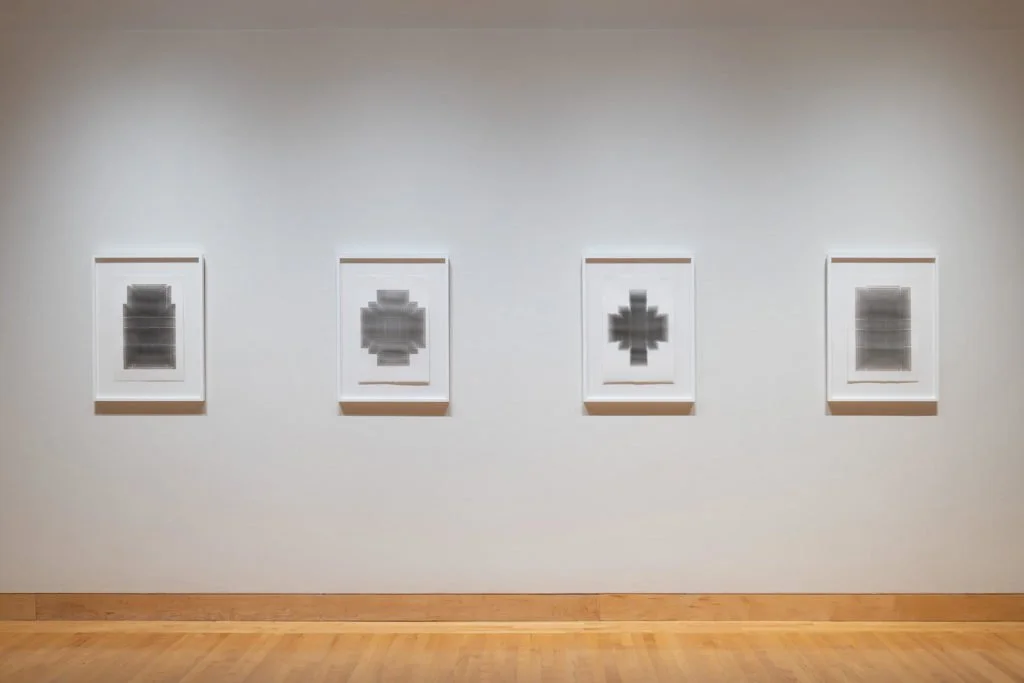Beautiful and Capricious: May Tveit at Greenlease Gallery
May Tveit: Drop Unit
February 8 – March 2 3, 2019
Greenlease Gallery at Rockhu rst University
5325 Troost Avenue
Kansas City, MO. 64 110
Drop Unit, May Tveit’s exhibition of monoprints and sculptural installations made from
corrugated cardboard is trying to say something about the current culture’s hunger for
immediate information. However, it falls short on context – their mechanics the central
concern – although there is plenty of content to satisfy any Instagram’er. Drop Unit 1 (more
people love you than you know) and Drop Unit 4 (you have all the answers inside you, just
get still) both made of corrugated cardboard, hang from separate walls. Large and
presumably very heavy, intricate carvings are the outstanding features of each; creating
nooks, indentations, and shadows that are meant to be noticed up close. Approaching them
head on is when you notice Tveit’s detail and devotion to craftsmanship. Sharp and stylish,
these massive works are ripe for photographing. However, without a rich understanding of
what the artist wishes to convey, I am only seeing this work as a backdrop, a prop for
something else to be in front of it.
Drop Unit 1 (more people love you than you know) corrugate, graphite (Image courtesy EG Schempf)
Drop Unit 1 (more people love you than you know)(Corrugate, graphite) Image: author’s own
As grand as these sculptural pieces appear, Drop Unit coolly avoids any larger conversation.
The scale of the pieces are the priority, which is part of its impressive nature. Details are
finely hewn to exact precise corners and indentations that bring shadows and angles,
especially Drop Unit 1 (more people love you than you know), of which the entirety of the
piece is covered in graphite, adding a noir-like effect, making the cuts and angles appear
sinister. Still, the work held me back from the surface. This is an exercise in construction. For
the time I spent with the work, and the time spent looking at everyone’s online postings, most
of which were taken at the opening, the feeling of excitement fades once you depart and
what lingers is very little. The idea of relying on presentation for its own benefit diminishes
interest rapidly.
Admiring the scope of her presentation, I am hard-pressed to see how the energy and
materials consumed here in any way invites me to plumb any personal understanding of how
I ought to be considering the work. Tveit’s language is about shapes. A manifestation of
perfection grounded in craftsmanship alone, I cannot glean anything past the nuts and bolts.
Any thought or theory attached to this work would have given it a layer of depth that is
presently missing.
Drop Unit 4 (you have all the answers inside you, just get still) (Corrugate) Drop Unit 1 (more people love you than you know) (Corrugate, graphite), Image courtesy EG Schempf
This show had me thinking about former Kansas City artist Anthony Baab’s 2013 Strenuous
Nonbeing at the former Grand Arts, also in Kansas City. In addition to several cardboard
installations, he presented a video installation of an undisclosed location showing a series of
constructions (also cardboard) inhabited by cats. Says Baab, the “… subject had to do with
‘the gap,’ the thing that exists between ideas and objects…” And this is where I feel Tveit’s
presentation stops short; Baab gave us a ‘why’ and not just a “what,” the very lack that nags
at me concerning Tveit.
Viewing Drop Unit 1 (more people love you than you know) cannot help but think of the
energy taken to produce the 108 layers of corrugated cardboard for these two central works.
Is this a good practice of sourced materials? In an email conversation with the artist, I asked
Tveit if it was new cardboard set aside for her. She replied, “Yes. It was new material. Once I
determined what type/kind of corrugate I wanted to work with I ordered it and they produced
it.”
Although a craft like ceramics more than likely leaves a larger carbon footprint, I am inclined
to make comparisons to Tveit’s exploration of cardboard as a raw material. There is an entire
story of the wasteful packaging that arrives at our doorsteps from Amazon and Home Depot
that could use some exploration. I think Tveit missed an opportunity to explore discussions
that extend beyond the use of process and materials alone, but nor does this does not give
Baab a pass. Although in 2013, I would say people were only just beginning to ask these
questions. A few years have made quite a difference in the way this subject is being
approached in public discourse and the arts. Not to diminish Tveit’s superior skills and
craftsmanship, but there is a lack of awareness in not addressing the everyday association
with this material.
Framed monoprints, ink on paper (Image courtesy EG Schempf)





